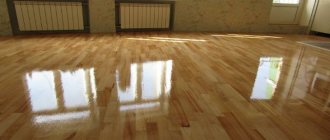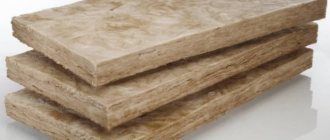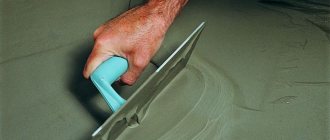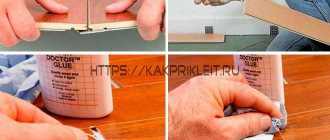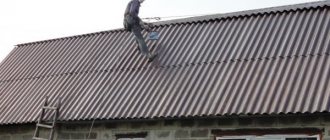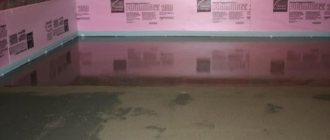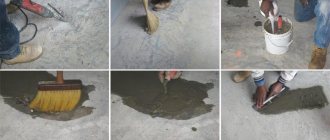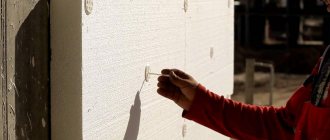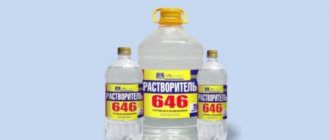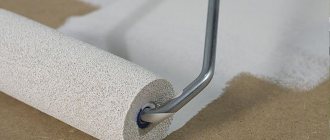The floor in an office or home is constantly exposed to stress, and for this reason reliable protection is required - a special coating that will help preserve the original structure, prevent damage and loss of color, and add attractiveness.
Buy Floor Varnish in Petrovich =>>
Why is it necessary to varnish a wooden floor?
For a wooden covering to always look good, it is not enough to make it from high-quality wood, lay it correctly and sand it. Without a protective layer, it will not retain its fresh appearance and beauty for a long time - it will begin to fade, turn gray, crack, get dirty, and become covered with stains that are difficult to remove. And soon you will not be able to enjoy the pleasant shade and beautiful texture of wood.
All the disadvantages of this natural material, vulnerable to external influences, can be easily mitigated by using parquet varnish as a finishing coating. It performs several functions at once:
- protects against mold and mildew that colonize wood at high ambient humidity;
- prevents its damage by insects and small rodents;
- creates a film impermeable to water, thereby preventing swelling of wooden floor elements;
- forms a durable coating on the surface that is resistant to abrasion, mechanical loads, and pinpoint impacts;
- preserves the natural color of the wood or, in the case of using a tinted composition, gives it the desired shade;
Using varnish you can change the color of wood and imitate more expensive species Source moi-pol.ru
- enhances the contrast of the wood pattern, making the flooring more expressive and impressive.
Many covering paints have similar protective properties, but they hide the wood itself with its unique fiber patterns. Whereas water-based parquet varnish and other varnish coatings retain its natural appearance.
Preparatory work
A new wooden floor that has not previously been varnished does not require pre-treatment. If the floor covering has already been painted with it, as well as in cases where it has not been previously treated and consists of spruce or pine, then preparatory work, which includes sanding, must be carried out without fail.
They must be carried out in the following sequence:
- The first step is to remove furniture and other objects from the room that are located on the floor or that could interfere with the work being carried out.
- Next, you need to inspect the floor covering for knots, loose nails or incompletely screwed in screws, as well as other elements that can lead to damage to the sandpaper or sanding machine during its use. If detected, they should be eliminated. In the case of fasteners, they must be finished off with a hammer or tightened with a screwdriver so that their heads are eventually slightly recessed into the floor covering.
- If some of the laid boards have significant damage, then the best solution is to replace them with new similar floorboards.
- To eliminate small cracks, you need to use a special wood putty.
- Next, it is necessary to hide the places where the boards are fixed with fasteners and knots with a similar composition.
In addition to it, you can prepare a paste yourself from wood sawdust and wood glue. These mixtures should be applied in a circular motion using a spatula. Afterwards you need to wait for the composition to completely harden. - Floor coverings made of coniferous wood must first be cleaned of resin before opening with varnish, for which you need to resort to using regular gasoline.
If the floor is additionally treated with wax to increase protection, then it must also be removed, since it leads to significant contamination of the sandpaper. To avoid this, you can resort to using a special composition or white spirit.
Next you need to sand the wooden floor. For this task, you need to resort to using a grinding machine, through which it will be possible to remove various irregularities and other defects from its surface. In addition, mechanical sanding should be carried out to remove the top faded shade from the wood, so that it can be refreshed.
The process itself is recommended to be performed as follows:
- The initial treatment of the floor, during which it is necessary to remove dirt and old coatings from its surface, should be done using coarse sandpaper.
- Next, it needs to be replaced with a medium-grain one, which will allow the wood to be leveled and give it its initial color.
- Upon completion, it is necessary to sand the floor with a grinding machine equipped with fine-grain sandpaper.
Note! Corners and other hard-to-reach areas should be passed by hand or using a special machine designed for ends and corners.
- After this, it is necessary to open the surface of the floor covering with an antiseptic composition. This step is not necessary, but thanks to it it will be possible to protect the tree from mold, mildew and insects. Complete absorption of the antiseptic occurs within 24 hours.
- In addition, the floor needs to be vacuumed, since after treatment small waste remains on it, which can cause a deterioration in its appearance, forming the effect of “grains of sand” on the surface.
- To completely remove dust, you can use a regular damp cloth. It is better to use microfiber as it removes debris from both wet and dry flooring.
- Washing the floor must be done with warm water with the addition of a detergent. The first step is to wipe a small area of the surface, and then proceed to wipe the rest.
Note! If the wood takes on a purple tint, this means the presence of tannin in its composition. In such a situation, it is necessary to exclude the addition of detergent. In addition, they should not be used when washing chestnut and oak parquet.
Upon completion, the floor covering must be wiped several times with a damp cloth and wait until it is completely dry before proceeding to the next steps.
What to consider when choosing varnish
The main thing you need to pay attention to when choosing a paint coating is the scope of its application and operating conditions.
Place of application
Wooden floors can be used not only in the house, but also on the open terrace or in the gazebo. To finish them you need different parquet varnish. It is clear which one is better to choose to create a durable coating outside the walls of a warm house: it must be intended for outdoor use and have the appropriate mark on the packaging.
Varnish for exterior use Source gidpokraske.ru
Temperature
Not all varnishes can withstand exposure to negative temperatures or periodic temperature changes from plus to minus values. In such conditions, only frost-resistant compounds can maintain the strength and integrity of the coating. Therefore, even inside the house, if it is not heated in winter, varnish is used for external use.
Additional protective properties
Sometimes there are special requirements for the coating. For example, in conditions of constantly high humidity, wood must be protected from the appearance of fungus, and in rooms with a stove or fireplace - from accidental fire. There are varnishes on sale that contain antiseptic additives. You can reduce the risk of a fire from a coal falling out of the fireplace by treating the space in front of it with fire-retardant varnish.
Compositions with fire-bioprotective properties are more expensive than usual Source epkrt.ru
Loads
The main question about parquet varnish is: which one to choose for the living room, and which one for the kitchen or hallway. This depends on the functionality of the room and the load on the floor covering. In places with little traffic, the absence of heavy furniture and equipment that has to be moved, you can use coatings that are not the most resistant to mechanical stress.
But in the kitchen and hallway, children's playroom and living room, where dancing is often held, a wear-resistant floor varnish is needed. Otherwise, you will have to renew the coating too often.
The surface often suffers from walking on it in street shoes Source parketplanet.ru
Composition and properties
Any paint and varnish product, after complete drying, ceases to release harmful volatile substances into the environment that may be contained in it. This only happens when the surface is very hot. But not everyone has the opportunity to leave the house during repairs, and in such cases you should choose a parquet varnish that is quick-drying, odorless, and does not contain substances that can cause allergies.
You need to be especially careful when studying the composition of the product if you are going to varnish the floors yourself.
See also: Catalog of companies that specialize in finishing materials and related work
Color and texture
Varnishes are colorless and tinted, glossy and matte. There are even compounds with an anti-slip effect that include abrasive particles. All these decorative and operational features of the coating must be taken into account and correlated with the overall appearance of the interior or surrounding space.
It is better to select the color based on samples with dyes Source vs71.ru
Note! In stores, painting is usually done on a pine board. The selected varnish may look different on a different type of wood.
Wood species
Different wood species differ not only in color and pattern, they have different hardness, density, resistance to moisture and other influences. For example, larch, due to its dense structure and special properties, does not particularly need protection; it is enough to apply a decorative coating with average wear resistance. This could be a water-based acrylic floor varnish.
But pine and spruce wood is soft, so you need to create a durable, wear-resistant coating that can withstand mechanical loads well.
Particular attention should be paid to parquet flooring made of oak and exotic woods. The tannins and essential oils they contain can be released to the surface, forming unsightly dark spots. Before varnishing, such a floor is treated with a neutralizer or primer.
Primer for wood Source stroyfora.ru
Advice! It is recommended to pre-treat any hardwood with a transparent bioprotective primer with an antiseptic.
Why do you need to varnish wood flooring?
Applying a composition of this type to a wooden floor is required due to the whimsical nature of the material itself, which requires additional protection for full and long-term operation. In many ways, opening wood with varnish helps improve technical qualities and protect it from a number of negative influences:
- Water protection. Moisture seeps deep into the wood and over a period of time it evaporates, as a result of which the dimensions of the material partially change. In these cases, the wood begins to dry out, and in the opposite situations, it begins to swell. If there is varnish on the surface of the floor covering, there is no change in the level of humidity inside the material.
- The wood exposed by it increases the resistance of floorboards to mechanical damage, including abrasive loads.
- To remove dirt from the floor surface, you have to spend less effort, since the varnish prevents the absorption of significant amounts of dirt.
- When opened with this composition, it is possible to emphasize the natural pattern of the wood. The top layer will keep the flooring in its original condition and prevent it from wearing out.
- Natural wood is very often damaged by various insects and microorganisms. Varnish reduces this danger to a minimum.
Note! When you open a wooden floor with varnish, its level of strength increases and the likelihood of scratches on its surface is eliminated.
Types of varnishes
The properties and characteristics of the varnish largely depend on the type of solvent, which can be water, organic resins, or alcohol.
- Water-based parquet varnish is a quick-drying, virtually odorless composition.
- Varnish based on organic solvents usually has a pungent odor, which disappears only after the final polymerization of the coating.
- Alcohol varnishes have a characteristic odor that quickly evaporates and does not harm the body.
The most durable and wear-resistant products are those based on organic resins, which can be one-component or two-component. The former are a ready-to-use solution, the latter are prepared before use by mixing two components - a base and a hardener.
Best lists
Don’t limit yourself to a small rating; let’s get to know the best in the following categories:
- Water.
- Polyurethane.
- For decoupage.
Now let's move on to the description. The section will describe one model, including descriptions, parameters and price in the middle range.
Water
TURY has a wide range of applications. Used as a coating for furniture and floors. The total drying time is 6 hours. The next step is to apply a new layer if necessary. You can use any tools: roller, sprayer, brush.
| The basis | polyacrylic |
| Weight | 2 kg |
| Diluent | water |
| Gloss | semi-matte |
| Drying | 6 hours |
Price: from 450 to 600 rubles.
construction varnish TURY
Polyurethane
VGT Premium is diluted with water in order to be economical and increase the existing volume. It is safe and easy to use, making it suitable for most buyers. The complete drying time is a day. Does not have a specific color, with a high tendency to colorlessness.
| The basis | polyurethane |
| Weight | 2.2 kg |
| Gloss level | matte |
| Diluent | water |
Price: from 250 to 500 rubles.
construction varnish VGT
For decoupage
Poli-R is a varnish designed for parquet flooring, providing it with high strength and resistance to water. Diluting the product with water is prohibited, but it is strongly recommended to use a solvent, as when working with paint. After some time of drying, the varnish shines and gives the parquet a more presentable appearance.
| Volume | 0.75 l |
| The basis | alkyd-urethane |
| Diluent | solvent |
| Shine | glossy |
Price: from 400 to 550 rubles.
construction varnish Poli-R
Video description
How to mix and apply two-component varnishes, watch in the video:
Varnishes are classified according to the type of synthetic resins they contain, which are the base.
Acrylic
Acrylic floor varnish is odorless, quick-drying, as it is water-based. Its advantages are affordable price, ease of application, non-toxicity. But the moisture resistance and wear resistance of such compositions are low, they do not withstand abrasion and mechanical loads well, therefore they are recommended for use in dry rooms with little traffic - in bedrooms, offices, living rooms.
Advice! To prevent the water in the varnish from penetrating into the wood fibers and causing it to swell, it is advisable to prime the floor before decorative finishing with such means.
Acrylic parquet varnish Source vse-kraski.ru
General information
Such a protective coating can be called a moisture-resistant, wear-resistant floor varnish, which, due to its chemical composition and qualities, can be applied to both concrete and wooden floors. There is a wide variety of building materials and paint coatings on the modern market, which is why buyers cannot make a choice for a long time.
How to choose a varnish
When choosing a product (varnish) to cover a floor, the buyer usually tries to catch three birds with one stone:
- Give the flooring a noble color.
- Create a protective layer that will prevent damage to the wood.
- Choose a varnish that will match the interior.
Moisture resistance and wear resistance of varnish for a wooden floor are of great importance, and when choosing it for protection, consider the following points:
- Possibility of post-processing.
- Has the wood been pre-prepared and treated?
- Tree species.
- Compatible with old paintwork.
- Terms of Use.
Regarding operating conditions, you should pay attention to how much traffic there will be in the room and what level of humidity. For heavy loads, you should choose a floor varnish that is moisture-resistant and wear-resistant.
When reading the composition, you can determine the protective properties of the varnish, for example, alkyd floor varnish is a kind of protector against high levels of humidity, alkyne-urea varnish makes the coating durable and reliable, petroleum-polymer or oil-based is excellent for places with heavy loads and traffic.
Parquet varnish, which is used to cover wooden floors, is extremely popular among buyers - it can be acrylic, alkyd and water-based.
When choosing a floor varnish, you should decide which one will be best for you based on the three criteria described above, as well as on gloss and shade.
An equally important role is played by the lighting of the room, architectural features, color of the ceiling and walls, since it is precisely for these data that you can choose a varnish of a certain color, as well as choose a matte or glossy sheen according to your preference.
For a light floor, matte floor varnish is perfect, where there is good lighting and the room is spacious - a wonderful shade and shine will highlight the beauty of the wood. It is better to choose a glossy floor in rooms with poor lighting and small size, since gloss can visually add volume and reflect light.
Due to the development of modern technologies, there are also floor varnishes that also have a certain shade. Yes, these are colored floor varnishes that appeared relatively recently, but the designers immediately liked the interesting solution of the manufacturers and was appreciated, giving them the opportunity to realize the best and newfangled ideas.
Video description
This short video shows what alkyd varnish looks like on parquet:
Urethane
Inexpensive urethane varnishes have average resistance to stress, excellent elasticity, water-repellent and anti-slip properties. Suitable for kitchens, bathrooms, stairs, including street ones. They are rarely found in their “pure” form.
Acrylic-urethane and alkyd-urethane compositions, which combine the advantages of all resins included in the composition, have higher strength indicators. Water-dispersion mixtures with the addition of acrylic are chosen when you need a wear-resistant, moisture-resistant floor varnish, for interior use, and odorless. For example, for decorating a children's room or bedroom. Alkyd-urethane is also suitable for living rooms, but it takes time for the smell to dissipate.
Alkyd-urethane varnish for interior work Source marwin.kz
Epoxy
Epoxy varnishes are acid-curing substances with a high degree of toxicity, so you need to work with them using personal protective equipment, and only in well-ventilated or ventilated areas. After application, the smell lasts for quite a long time, up to three days, during which being in a room where the air is saturated with toxic substances is dangerous to health.
For those who need a quick-drying varnish for parquet, an epoxy composition is not suitable. It is more of an exterior decking coating that is exceptionally durable and resistant to moisture.
As a rule, epoxy varnishes are two-component compositions. After mixing the components, the solution must be applied immediately, as it sets quickly. For this reason, it is better to entrust work with such varnishes to professional painters.
Rating of parquet varnish for decoupage (alkyd-urethane)
PRESTIGE Parquet glossy
A budget option that is suitable for floors and walls. Upon completion of the work, the parquet will have a glossy appearance and will also be protected from UV radiation. The composition is one-component, so the substance cannot be diluted, which increases ease of use. Sold in 1.9 liter cans.
The average cost is 470 rubles.
PRESTIGE Parquet glossy varnish
Advantages:
- Easy application;
- Good composition;
- Price;
- Efficiency.
Flaws:
- Not found.
EUROTEX Premium semi-matte (2.5 l)
The model is a little more expensive than the previous one, but this is due to its high-quality composition. The product contains compounds that are safe for the body. When treating parquet indoors, a person will not experience dizziness and nausea. The main thing is to follow the instructions and use PPE.
Gloss level – semi-matte. The minimum flow rate is 8 sq. m per liter, maximum value – 17 m2/l. Application method: brush, roller, spray, in this case the user has no restrictions. The drying speed is 96 hours, which is a high indicator for such a model.
Sold at a price of 1,099 rubles.
EUROTEX Premium semi-matte varnish (2.5 l)
Advantages:
- Good composition;
- Easy application;
- Acceptable consumption;
- For ceilings, furniture, walls and floors.
Flaws:
- Drying speed.
Profiwood Parquet
If you need to paint a small area of a room of 10 square meters. m., then this is a suitable option. Sold in a special jar weighing 0.7 kg. Gloss level – gloss. The composition contains safe components, which will allow the substance to be used for treating the floor in a child’s room. Drying speed – 24 hours. Application is carried out with any tools.
Sold at a price of 190 rubles.
Profiwood Parquet varnish
Advantages:
- Good efficiency;
- Does not harm the body;
- Drying speed;
- Suitable for processing furniture.
Flaws:
- Not found.
Marshall Protex Parke Cila 90 (2.5 l)
An excellent product that will not only give the parquet a unique look, but will increase wear resistance. Sold in 2.5 liter cans, which is the best option if a person plans to treat floors in a large room (approximately 36 m2).
The drying time is 96 hours, so you will have to wait a little longer to get beautiful glossy floors and decor. The composition is one-component, which simplifies application, since there is no need to dilute anything.
The average price is 1,450 rubles.
varnish Marshall Protex Parke Cila 90 (2.5 l)
Advantages:
- Good consumption;
- Increased wear resistance;
- Compound;
- Can be applied with an applicator.
Flaws:
- Drying speed.
NEOMID Parquet
A budget option that is in demand among many builders. A good composition will give the room an unusual look, and also make the floor glossy, resistant to moisture, sunlight and wear.
Minimum consumption – 10 sq.m. m per liter, this is an average figure, so it is recommended to use the product for small rooms. Application is carried out using standard methods; there is no need to buy any special tools. Suitable for interior work.
The average price is 940 rubles.
NEOMID Parquet varnish
Advantages:
- Efficiency;
- Price;
- Durability of the coating;
- Does not emit toxic fumes.
Flaws:
- Not found.
Floor varnishing technology
To obtain a perfectly smooth and beautiful varnish coating, careful preparatory work is required. If the floors are new, it is enough to sand them, fill in minor defects with putty and remove all the resulting dust.
It is more difficult to prepare a previously painted or varnished surface. The old coating must be cleaned using a spatula, abrasive materials, or a grinder until it becomes matte. Then it is sanded to remove irregularities, dust is removed, washed and dried. Defects are corrected with putty or a special repair gel polish.
Features of pine floors
Pine is a very interesting tree in its properties.
Pine is a very interesting tree in its properties, having excellent strength with a wood density of 520 kg/m3, which depends on the growing conditions. Forests located on wetter, fertile soils produce looser wood, which has less value compared to pine from arid places, with a fine structure and increased density, which is especially valued in construction.
In the production of pine lumber, it is possible to obtain products with a unique texture and color, which varies largely depending on what part of the trunk the boards are obtained from. When dried, the core of the trunk acquires a brownish-red hue, and the sapwood may remain pinkish or almost white, with early wood having a lighter shade.
Pine lumber has a lower hardness (Brinell coefficient 2.49) than oak, beech or acacia, which causes irreversible deformation in places where small constant static loads or impacts are applied, and this should be taken into account when further processing and use of wooden floors made from them .
One of the contradictory qualities of pine boards, namely its increased resin content, can be attributed to advantages when increased moisture resistance is required, or to disadvantages when resinous secretions on the surface of the facade or floor can spoil the appearance of the coating.
Video description
See how to properly apply the repair mixture using spatulas:
If a flowable, odorless water-based floor varnish is chosen for finishing, the floors are first primed in 1-2 layers, drying each one. In general, a primer will not be superfluous for any varnish. It will make the base less permeable, improve its adhesion to the decorative composition, and reduce varnish consumption.
Conditions for performing painting work
Each coating has its own optimal conditions for application, drying and polymerization. They are indicated in the instructions. Some varnishes can be worked at an air temperature of +5 degrees, for others the minimum temperature is +15 degrees. Therefore, before choosing a varnish for parquet, you need to study the instructions.
An important indicator of the environment is the humidity of the air and the base itself. All varnishes, except those that are water-based, must be applied to a completely dry surface with air humidity not exceeding 80%.
The varnish cannot be applied to floorboards made of wood with natural moisture; they must be allowed to dry Source milano-colori.com
It is also advisable to exclude drafts while the coating dries. An exception is made for toxic acid-curing compounds.
Application rules
To apply varnish, use brushes with natural bristles, velor rollers or special applicators. Use a brush to paint corners and hard-to-reach places, and spread the product over the main surface with a roller or applicator, moving it along the fibers.
The parquet is varnished in 2 or 3 layers.
- Apply the first layer.
- Let it dry.
- Sand to remove raised wood fibers mechanically or manually with fine-grained sandpaper.
Intermediate sanding of parquet Source amazonaws.com
- Vacuum and wipe the floor with a damp cloth.
- Dry again and repeat the varnishing procedure.
Opening the floor with a primer
Before varnishing a wooden floor, you must also cover it with a primer - nitro varnish. The primer should be applied with a brush 10 cm wide and 1-5 cm thick along the length of the wood structure, avoiding missing areas.
When opening the surface with a primer mixture, it is necessary to take into account the following nuances:
- If the wood contains tannins, which primarily applies to oak, due to which darkening occurs when interacting with polyurethane varnishes. To avoid this, it is necessary to pre-treat oak parquet with a special cutting primer.
- A special primer mixture, but with other qualities, must be used when preliminary opening the beech due to its instability. Before applying water-soluble varnish to a beech floor, it must be opened with a primer, which does not lead to gluing of the edges of the lamellas.
- Before opening, exotic wood should be varnished with a special primer mixture that paralyzes essential oils. Some of them (iroko and lepacho) contain inhibitors that slow down the action of the hardeners of the composition, which must be treated with a cutting primer, which is intended for heavy wood.
Briefly about the main thing
When choosing which parquet varnish is best for the floor in a house, bathhouse or on a terrace, you need to take into account many factors. The main ones are the mechanical load on the floor covering and the conditions under which it is used. For living rooms with a normal microclimate and low traffic, any water-based or organic-based varnishes with average wear resistance - acrylic, alkyd, urethane - are suitable. Where traffic is high, it is better to use durable polyurethane compounds. And for outdoor coatings, epoxy varnish is the best choice.
Ratings 0
Disadvantages of water-based varnish
- Reduced resistance to chemical and mechanical damage;
- Before applying several types of varnish, priming must be done;
- If there is low humidity in the house, sagging is likely;
- It is necessary to choose the right care products;
- When applying varnish, the edges of parquet elements may stick together. In such cases, a primer comes in handy;
- Due to the fact that the varnish can get into the cracks between the dies, the floor will then creak unpleasantly;
- If you have damaged the covering, the damage can only be corrected by complete restoration of the entire parquet;
The humidity level should not be less than 50 percent.
